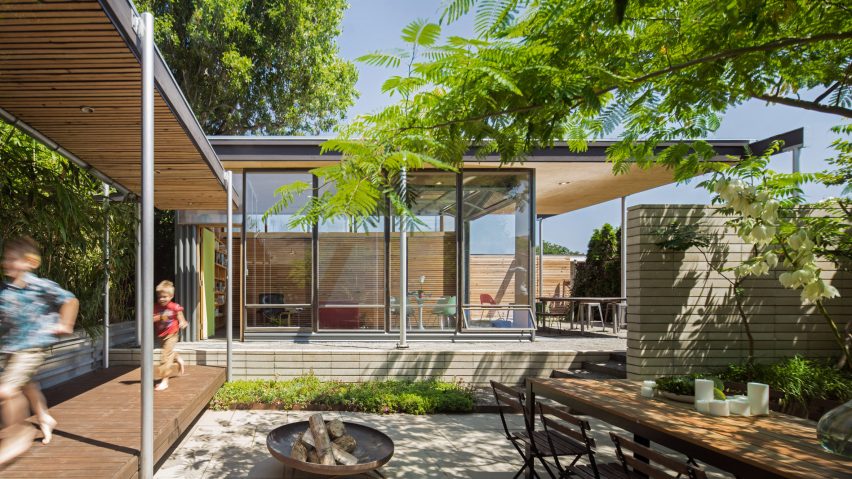
Seattle garden studio by Wittman Estes offers model for "courtyard urbanism"
US firm Wittman Estes has added a studio building and a Chinese-inspired courtyard to an existing residence in a dense neighbourhood, aiming to show how to maximise an urban lot.
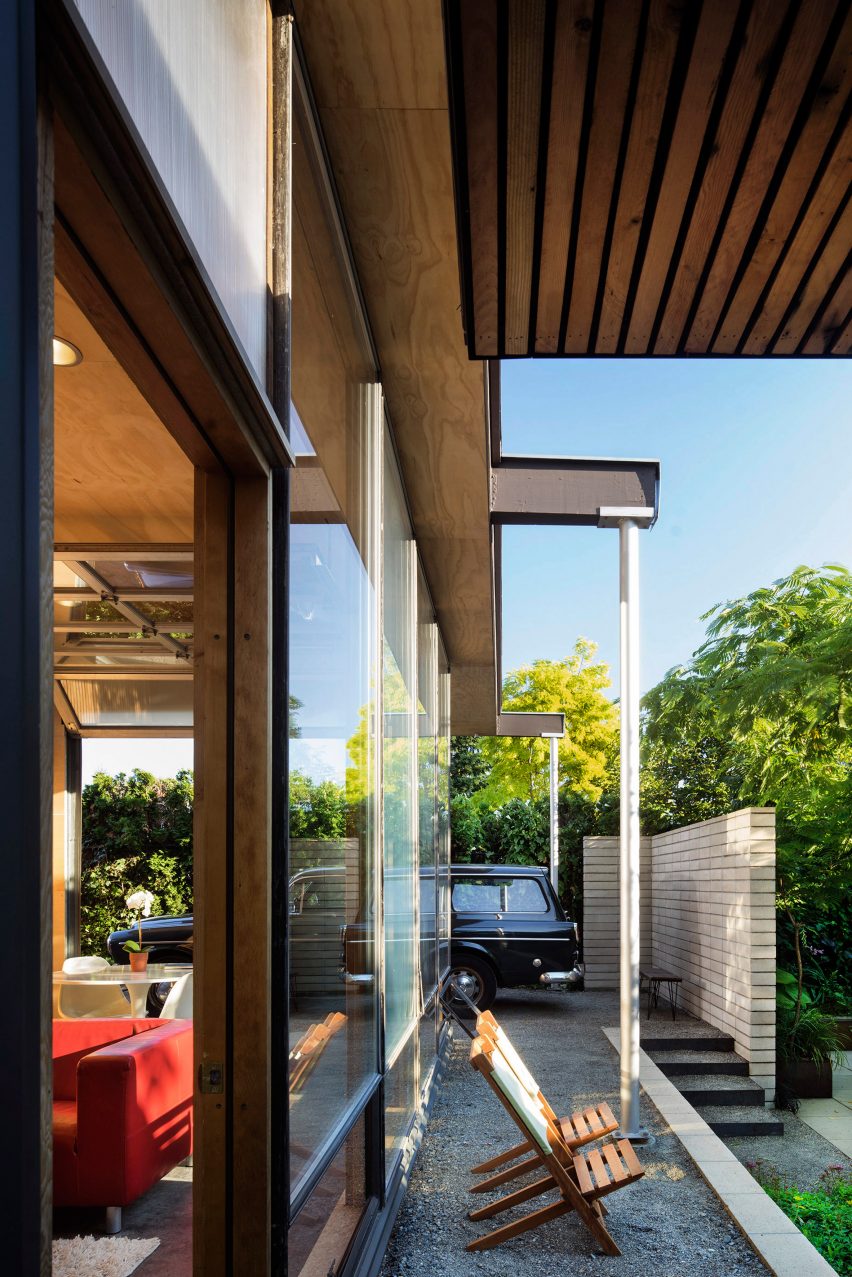
The project, called Grasshopper Studio and Courtyard, is located on a rectangular parcel that contains a modest home dating to the 1940s. The project entailed adding a multi-functional studio building in the rear of the property, adjacent to an alley, along with a sunken courtyard that sits between the studio and the main home.
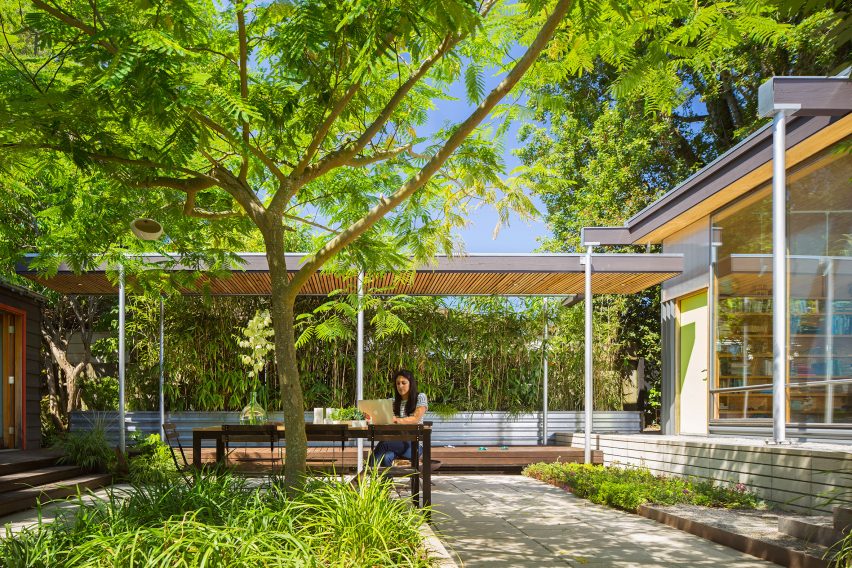
"The flexibility of a small building footprint and large private outdoor space maximises and integrates the use of the entire property," said Wittman Estes, a local studio founded by architect Matt Wittman and landscape designer Jody Estes.
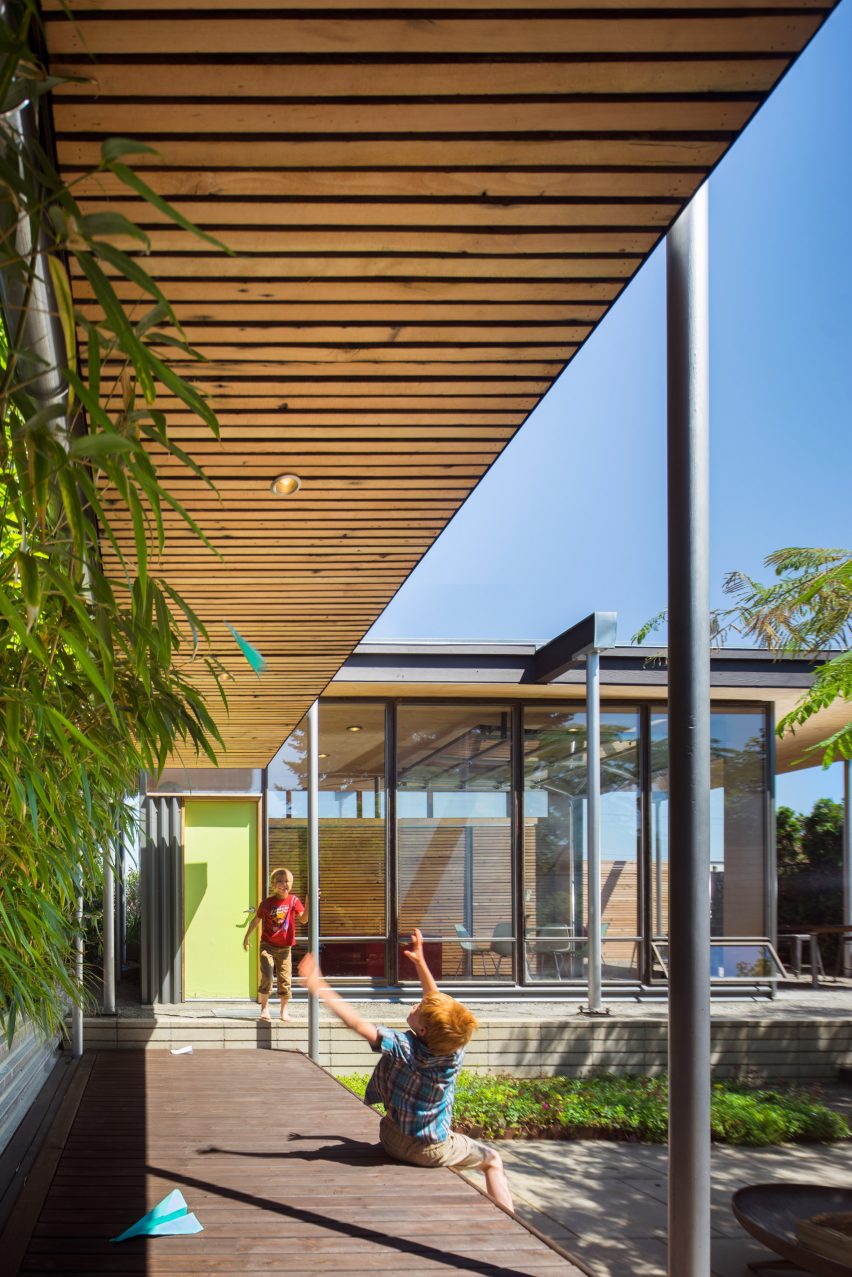
The studio was influenced by Seattle's housing crunch, which has led to the demolition of small urban buildings and the emergence of large, boxy structures that some perceive as undesirable. The Grasshopper project reconsiders the traditional "single-family lot and offers Seattle and alternative density for the future".
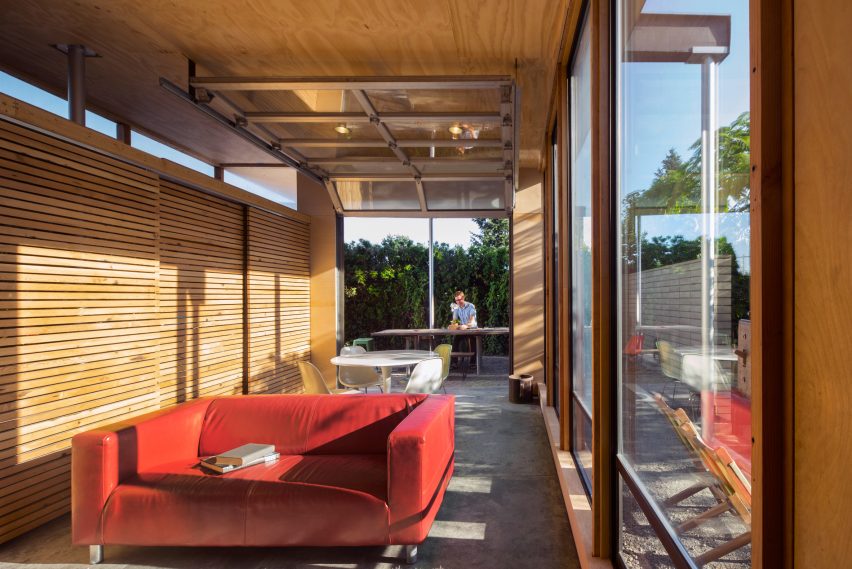
"Normative new housing demolishes existing small buildings and replaces them with Seattle Modern Boxes that maximise building size and density within zoning setbacks," said the firm. "Grasshopper Studio and Courtyard offers an alternative density called courtyard urbanism."
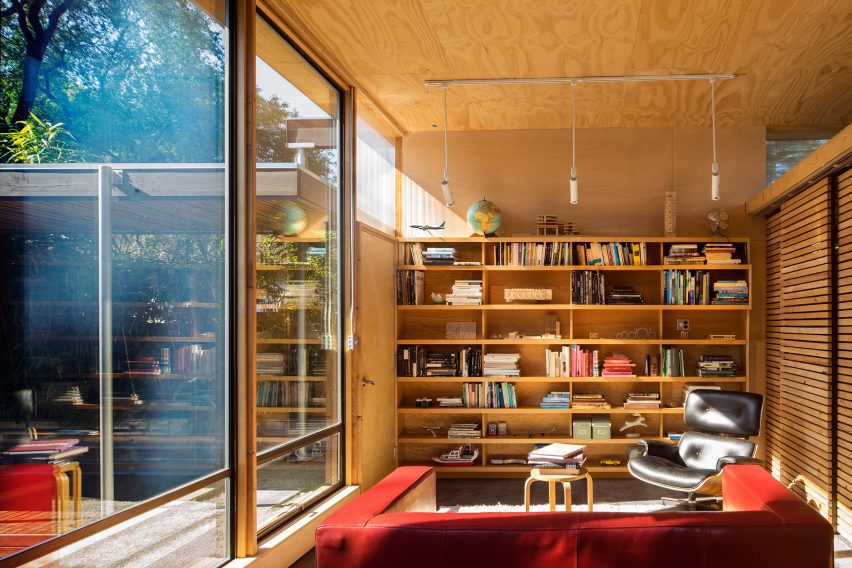
Rectangular in plan, the studio building encompasses 360 square feet (33 square metres). The side facing the home features a glass wall, while the elevation overlooking the alley is wrapped in corrugated metal. The southern facade has a glazed garage door that lifts up, eliminating the boundary between inside and out.
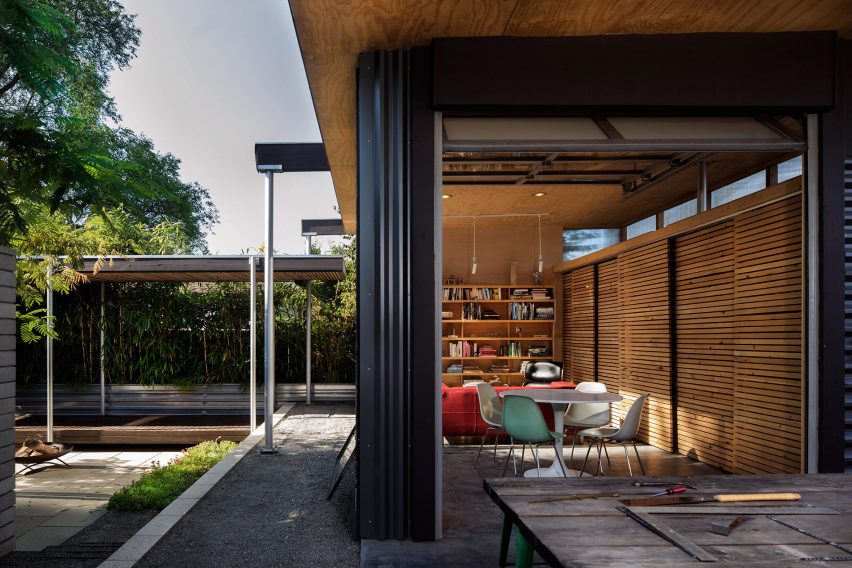
The structure is topped with a flat, overhanging roof that extends far beyond the south wall, forming a carport. Plywood was used to cover the soffit and interior ceiling.
The compact building contains a sofa, lounge chair, dining table and a bookshelf. A wall made of wooden slats conceals a bathroom and closet. The space was designed to be highly adaptable.
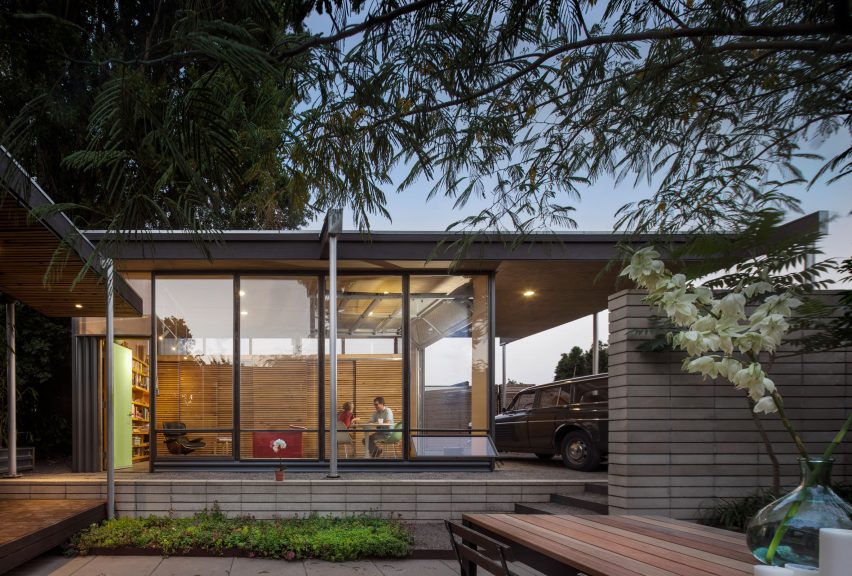
"The open-plan studio is programmatically indeterminate to encourage maximum flexibility," the studio said. "Future uses include visiting guests, short-term rental space, utility/workshop space, and play space for the main house."
The studio overlooks the sunken terrace, which was inspired by ancient Chinese courtyard housing. A paved area can accommodate dining, entertaining, lounging and year-round play. Lining the north side is a covered walkway, which can be used as a seating area or a stage for children's performances.
A silk tree in the centre of the courtyard offers dappled shade, while canopies of neighbouring trees are dotted around the perimeter.
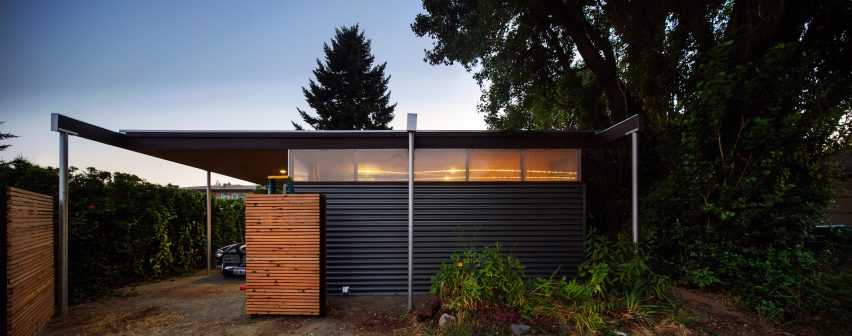
"The illusion of a much larger property is created through 'borrowed landscape' from adjacent trees and the sky above," the team said.
Although Seattle is not particularly known for its fine weather, a variety of properties in the city are arranged around courtyards. They include an updated 1960s house and a couple's self-built home – both overseen by MW Works.
Photography is by Nic Lehoux.